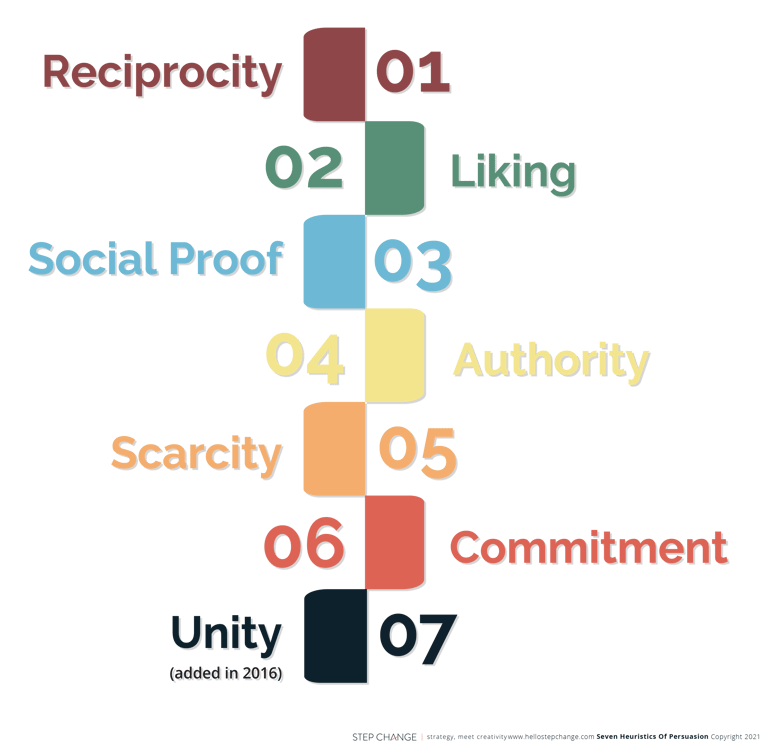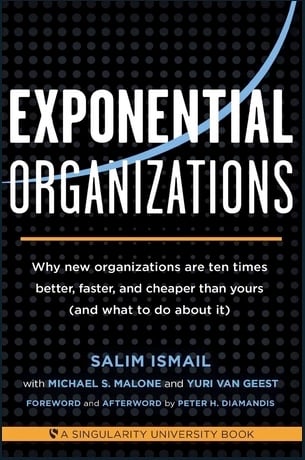UPDATED: In this exclusive interview, foundational expert and pioneering authority in the field of influence and persuasion Dr Robert Cialdini sits down with Step Change to dive into his book “Influence: The Psychology of Persuasion” — the bestselling and groundbreaking guide to getting that 'yes!'.
From the sustained interest in the Influence factors, and the addition of the Unity principle, to the implications of machine learning and AI in persuasion and more — learn exclusive and fresh insights from Dr Robert Cialdini himself by watching the full interview below:
Wondering how to leverage your influence at a time of great change? Get Dr Robert Cialdini’s latest book “Influence, New and Expanded: The Psychology of Persuasion” — featuring new research, new insights, new examples, and online applications.
Never miss an update and be the first to get influence and persuasion insights by connecting with Dr Robert Cialdini via influenceatwork.com.
Swaying someone to your point of view takes skill. The same can be said when it comes to selling a product — making the power of persuasion a potent tool that should be honed to a fine point.
In this week’s Knowledge Nuggets, let us take a look at the widely adopted classic Influence: The Psychology of Persuasion.
With over 5 million copies sold worldwide, Dr. Robert B. Cialdini explains the psychology of why people say ‘yes’, the principles behind the power of persuasion, and how to apply these principles ethically — not only in marketing strategy but in everyday situations.
Insight: Organisations that utilise the seven heuristics of persuasion are able to market their products more effectively.
Data: Across three studies with over 3.5 million people, it was found that psychologically tailored advertising resulted in 40 percent more clicks and 50 percent more online purchases than mismatched or impersonal messages. (www.scientificamerican.com)
What’s the step change: To integrate the seven heuristics of persuasion into your marketing strategies, download Knowledge Nuggets. Influence: The Psychology of Persuasion.
Seven Heuristics of Persuasion:
According to Dr. Cialdini, there are initially six principles that rule the science of persuasion — reciprocity, liking, social proof, authority, scarcity, and commitment. In 2016 he proposed the seventh key principle of unity. Let us examine each principle and its key characteristics.
1. Reciprocity
The principle of reciprocity is the obligation to give back to others in the form of behaviour, gift or service they have received. In most cultures, social norms compel people to return a favour or repay a debt. If you refuse to do so, you will lose face and possibly a degree of social standing.
This is by far the most universal and wildly used principle. The principle of reciprocity has been used since eternity. Kenyan palaeoanthropologist and conservationist Richard Leakey once said, “We are human because our ancestors learned to share their food and skill in a network of obligation.”
In a personal sense, if a person does someone a favour, we try to do something in return. Offering something for free, such as a seminar or other value-added gift, is one way of influencing consumers towards making a purchase.
2. Liking
According to Dr. Cialdini, people prefer to agree with people that they like. This is influenced by:
- Physical attractiveness – good looks are associated with honesty, trustworthiness, and other favourable traits
- Similarity – shared interests, opinions, and personalities make way for bonds
- Compliments – giving praise can trigger a positive response in others
- Contact and co-operation – working with common goals can inspire connections
- Conditioning and association – people like to engage with those who they perceive as models
The more you can mirror or find a common ground with your audience, the greater your chances of being liked, which gives you the leverage to influence them.
3. Social Proof
We are all social beings. Although we try to be more individualistic at times, it is part of our genetic makeup to follow the group.
It’s how we evolved as a species. We learned through trial and error — that those who follow the group survive and those who stray get eaten. This is why people often look to the behaviour of others to dictate their own.
4. Authority
Life can be chaotic. People always seek a sense of security. During times of trouble and significant change, we always look to authority figures to tell us the best course of action.
This also goes for product selection. Most of the time, people would rather rely on the recommendations of knowledgeable sources to influence their decision making and ensure that they are making the best choice. Online, people often trust those with verification marks and authority badges on their channels or websites because they signal expertise, credibility and certainty.
5. Scarcity
Short supply can indicate exclusivity and signal demand. People will always want what they can’t have. So if you want your product or idea to be well-received, present it as something rare. This will pique people’s interests and make them want to attain the product.
6. Commitment
Humans have a desire to be viewed as committed and consistent. When it comes to persuading people, consistency is a key factor. If you are consistent in your public commitments, you are demonstrating to people that you can be counted on.
If you are considered trustworthy, there is a likelihood of you convincing people to buy into your point of view. The consistency principle works because a majority of people crave social approval.
7. Unity
According to Dr. Cialdini, people are inclined to say yes to someone they consider as one of them. More than just having similarities, unity is all about shared identities.
Think of tribe-like categories that individuals use to define themselves such as race, ethnicity, nationality, family, and even political and religious affiliations. You are more likely to influence someone who has the same shared identity as you.
Summary:
The seven heuristics of persuasion are highly effective. However, this does not mean that they are foolproof. When you try to persuade someone, you should take their cultural background into account.
Remember that not everyone shares the same norms and mindset as you. So the effects can differ. Ultimately, persuasion is a powerful tool. It can be used in both ethical and unethical ways. It is your responsibility to use it with honesty and with forethought.
This book is required reading for all marketing professionals. The book covers the most common approaches to influencing the decisions of others. It is backed up by the author's time spent influencing direct marketing companies. It also provides insights on how to spot when you are being manipulated and how to handle it.
Download our Knowledge Nugget on Influence: The Psychology of Persuasion

















